On April 26-27 I participated in a symposium organized on the occasion of Peter Nagel’s 75th anniversary. The symposium took place at the Coptic monastery of St. Mary and St. Mauritius in Höxter-Brenkhausen (near Göttingen). There I had the opportunity to see old friends and meet new people. I am grateful to the organizers (Heike Behlmer, Frank Feder and Ute Pietruschka) for inviting me to deliver a paper in the presence of the celebrated scholar. Our host, the Bishop Anba Damian, did his best to make us feel welcome. If you have enough patience and the topic interests you, you can read below a draft of my presentation (with some references added).
Honorable audience, distinguished Professor Peter Nagel,
Professor Nagel’s accomplishments have earned him international recognition. We have gathered here today to honor his work. My contribution to this symposium is about a certain passage in a text which has been studied by our esteemed colleague: the so-called Unbekanntes Berliner Evangelium. He wrote a seminal article on this text: “‘Gespräche Jesu mit seinen Jüngern von der Auferstehung’ – Zur Herkunft und Datierung des ‘Unbekannten Berliner Evangeliums’,” Zeitschrift für Neutestamentliche Wissenschaft 94 (2003) 215-257. When I say seminal, this is not just an encomiastic feature meant to praise him. In fact, Professor Nagel has been the first scholar who argued that this text is not an ancient gospel, but rather a work composed in Coptic, perhaps during the 4th or 5th centuries.
In the passage under scrutiny, Jesus says “I am the King, Amen. I am the Son of the King, Amen.” At a first glance, Jesus’ utterance sounds mysterious, like a riddle, but I will try to show that the passage is based on an interpretation of Psalm 71:1 (LXX), which was common during the 4th-5th centuries. Last but not least, I hope to show you by this example that we can experience great benefit by studying Coptic literature with the aid of Patristics.
The Apocryphon Berolinense/Argentoratense
In 1999, Charles Hedrick and Paul Mirecki published together the editio princeps of a Sahidic manuscript in the papyrus collection of the Egyptian Museum in Berlin (P. Berol. 22220).[1] The text is a revelation dialogue of Jesus with the apostles, written in the first person plural. The narrators are the apostles. An important part of the text is occupied by an extensive hymn of the Cross. The hymn is sung by Christ while to apostles are apparently dancing around the Cross and answer “Amen.” The original title of the work has not survived, but because of the title conventionally assigned to it in the editio princeps, the text is largely known today as the Gospel of the Savior. However, as I find this title unsatisfactory, I will avoid it. My main objection to the label “Gospel of the Savior” is that it suggests that the text is an apocryphal gospel, which possibly bypassed the canon. The confusion is already set in motion and the work has often been included among the lost gospels of early Christianity.
The German scholarship usually calls the text the “Unbekanntes Berliner Evangelium,” according to the location of the manuscript edited by Hedrick and Mirecki. However, since Stephen Emmel has shown that several papyrus fragments in Strasbourg belong to the same work, this title is now obsolete. Moreover, it implies that the text belongs to the gospel genre.
Despite these shortcomings, establishing a new title for a text which has already been named in a variety of ways, would only generate more confusion. Thus, I think the most satisfactory title of the text is the one given by the Corpus dei Manoscritti Copti Letterari project, directed by Tito Orlandi (Rome/Hamburg). In the CMCL database our text is called Apocryphon Berolinense/Apocryphon Argentoratense. This title takes into consideration, at the same time, the tenor of the text and the location of the two manuscripts in which it is preserved. Besides, the term “apocryphon” is more generous than “apocryphal gospel,” because it does not set any chronological boundary.
Peter Nagel on the Apocryphon Berolinense/Argentoratense
After the early gospel craze which this text has caused, the first attempt to reframe the historical and the ideological context of the Berlin apocryphon was made by Peter Nagel, who, in his response to the arguments advanced by Hedrick and Mirecki in their editio princeps, argued that the so-called “gospel” might in fact be a genuinely Coptic composition.[2] In his opinion, this is suggested by the quotations from the New Testament, which follow throughout the Sahidic version. As to the dating of the work, Nagel pointed out that the Christology of the Apocryphon Berolinense bear the marks of the 4th-5th centuries debates concerning the person of Christ. He remarked that a passage in the text, in which Christ says “I am the king, Amen. I am the son of the king, Amen,” must be translated at the level of dogma that Christ is God, that is, King, but at the same time son of God, that is, Son of the King.
Furthermore, Peter Nagel[3] pointed out that this passage in the Apocryphon Berolinense finds a close parallel in the sermon And We Will Also Reveal Something Else by Shenoute of Atripe (clavis coptica 0821):[4]
P. Berol. 22220 108, col.A,17-19 Shenoute
I am the king, Amen The Lord, the king Christ
I [am] the [Son] of the King, [Amen] and the Son of the King
In the following minutes, I would like to show you that 1) both Shenoute and the author of the Apocryphon are actually alluding to Psalm 71:1 (LXX), “give your judgment to the king, and your righteousness to the son of the king” ( ), conferring to it a Christological meaning. 2) I will try to show you that this typological interpretation of Psalm 71:1 is not an isolated case. Like in the Apocryphon Berolinense, in other Sahidic sources the reference to the kingship of Christ as announced in Psalm 71:1 is embedded in hymns, suggesting that the saying could have had a liturgical usage in the Coptic church. Moreover, this very peculiar interpretation of the Psalm in question has a rich Patristic background, which starts from Origen and becomes common during the 4th and 5th centuries. This would confirm once more the dating proposed by Peter Nagel.
), conferring to it a Christological meaning. 2) I will try to show you that this typological interpretation of Psalm 71:1 is not an isolated case. Like in the Apocryphon Berolinense, in other Sahidic sources the reference to the kingship of Christ as announced in Psalm 71:1 is embedded in hymns, suggesting that the saying could have had a liturgical usage in the Coptic church. Moreover, this very peculiar interpretation of the Psalm in question has a rich Patristic background, which starts from Origen and becomes common during the 4th and 5th centuries. This would confirm once more the dating proposed by Peter Nagel.
The Kingship of Christ and Psalm 71:1 in Coptic literature
The kingship of Jesus is explicitly linked with Psalm 71:1 in another sermon attributed to Shenoute, conventionally called De iudicio (clavis coptica 0367):[5]
(143, 14-28) Jesus is our king from eternity, as the Saint testifies about this from the beginning: “God, give your judgment to the king, and your righteousness to the son of the king” (Psalm 71:1) … He himself is the King and the Son of the King, the God which is and will be forever, Amen.[6]
Here it is clear the Shenoute interprets Psalm 71:1 as he explicitly refers to it.
In the Sahidic Book of Bartholomew, a text with which the Apocryphon Berolinense shares some features, in the first hymn of the angels heard by the apostle Bartholomew, the heavenly beings are singing to Christ:
Holy, Holy, Holy is the King, the Son of God, the Son of the King.
Remarkably, both in the Book of Bartholomew and in the Apocryphon Berolinense Christ is called “king” and “son of the king” in a hymnic section.
In the Enthronement of the Archangel Michael, preserved in Sahidic and Fayyumic, while Christ and the apostles are visiting the places where the souls are judged, the Devil appears on the Mount of Olives to the group of the lesser-disciples in the form of one of the apostles. He tries to tempt them to abjure Christ, but Bibros, the disciple of John, realizes the trickery. The disciples are asking help from an olive tree which Jesus previously carried with him to heaven, and Bibros says: “We praise you, olive tree that was worthy of this great honor, that the King, the Son of the King lifted up (to heaven).”[8]
The Christological interpretation of Psalm 71:1 occurs again in a hymn to Jesus from the Martyrdom of Shenoufe. This text has survived only in Coptic and it is, very likely, a Coptic composition (it belongs to the cycle of Julius of Aqfahs, the historiographer of the martyrs). The night before the martyrdom of Shenoufe and his twelve brothers, the saint sings to Jesus a hymn in which each verse begins with the sequence![]() (“I praise you”). This symmetrical arrangement makes one think that the author of the martyrdom took the anaphora from a liturgical source. Here we encounter again the typological interpretation of Psalm 71:1 as referring to the kingship of Jesus:
(“I praise you”). This symmetrical arrangement makes one think that the author of the martyrdom took the anaphora from a liturgical source. Here we encounter again the typological interpretation of Psalm 71:1 as referring to the kingship of Jesus:
I praise you, King and Son of the King
The juxtaposition of “king” and “son of the king” in the Coptic anaphoras and hymns, might indicate that the authors of these texts could have extracted the Christological titles in question from certain liturgical sources. An important argument in this sense is supplied by the Sahidic euchologion to mega (the equivalent of the Roman Catholic Missal), which was the main liturgical book of the Coptic priests. The Euchologion to which I will refer is preserved in a single fragmentary parchment codex, which came from the White Monastery in Upper Egypt.[10] The typological interpretation of Psalm 71:1 occurs in the Sahidic Euchologion at the end of an anonymous prayer of which only the final part has survived. This part contains an anaphora of Christ which was used during the Eucharistic liturgy, each verse being introduced by (“You are”):
(“You are”):
You are the lamb…
You are the physician…
You are the pilot…
You are the lion…
You are the King and the Son of the King
Although there is no decisive argument that the authors of the texts quoted until now (including the Apocryphon Berolinense) were directly influenced by the Sahidic Euchologion, I think that the occurrence of the sentence “You are the King and the Son of the King” in the principal book of the Coptic priests leaves open this possibility. Perhaps this would explain why the formulas concerning Jesus’ kingship appear so often in Coptic texts, especially in hymnic sections.
Can we circumscribe chronologically this Christology? The fact that it appears in Shenoute’s sermons And We Will Also Reveal Something Else and in De iudicio, which can be dated around the 5th century, is a first clue. Indeed, Peter Nagel indicated that this kind of Christology points to the 4th century debates concerning the person of Christ.[12] Thus, the expression is an affirmation of the dogma that Christ is at the same time “God” and “Son of God.”[13] His argument is nevertheless accurate. What I will try to show in the next few minutes is that this Christological statement presupposes also that Christ is God (i.e., King), but, as son of the king David, he is also human. I hope this will become obvious when I will quote from several Patristic sources.
The Kingship of Christ and Psalm 71:1 in Patristic literature
This metaphorical interpretation of Psalm 71:1 was popular especially during the 4th-5th centuries CE. It is possible that the source of this exegesis is Origen, who saw in this psalm a reference to the natures of Christ. In his Commentary on John (CPG 1453), the Alexandrine theologian says that Psalm 71 prophesies about Christ ( ). Further on, Origen interprets the term “king” as a reference to Christ’s superior part, while “son of the king” would designate the human side which the divinity assumed.
). Further on, Origen interprets the term “king” as a reference to Christ’s superior part, while “son of the king” would designate the human side which the divinity assumed.
I think therefore that “king” refers to the preeminent nature of the firstborn of all creation, in as much as judgment is given to him on account of his superiority, and “king’s son,” whom that nature assumed, formed in accordance with justice and modeled by that nature. And I am led to admit that this is so because the two are united in a single utterance and the remainder of the passage no longer proclaims two such figures, but one.[14]
In his Expositions of the Psalms (CPG 2140; clavis coptica 0061), which is preserved also in Sahidic,[15] Athanasius of Alexandria comments upon the same Psalm saying that “he is Christ, the King and the Son of the King” (![]() ).[16] Athanasius’ disciple, Apollinaris of Laodicea, gives a similar interpretation to the same passage in a fragment preserved only in the catenae commentaries. He says that Christ is King, but he is at the same time son of the king because he belongs to the kingly seed of David (
).[16] Athanasius’ disciple, Apollinaris of Laodicea, gives a similar interpretation to the same passage in a fragment preserved only in the catenae commentaries. He says that Christ is King, but he is at the same time son of the king because he belongs to the kingly seed of David (![]() ).[17] John Chrysostom was, in his turn, familiar with this interpretation. In his 26th homily on the Gospel of John, Chrysostom writes: “But he, the Lord, the King, and the Son of the King … who lives forever with his Father and sees him perpetually.”[18] Although he belonged to a different exegetical tradition, in the 5th century Theodoret of Cyrus wrote: “the Lord Christ is King and Son of the King (
).[17] John Chrysostom was, in his turn, familiar with this interpretation. In his 26th homily on the Gospel of John, Chrysostom writes: “But he, the Lord, the King, and the Son of the King … who lives forever with his Father and sees him perpetually.”[18] Although he belonged to a different exegetical tradition, in the 5th century Theodoret of Cyrus wrote: “the Lord Christ is King and Son of the King ( ) … For he is not only King, but also Son of the King. For as God, he was generated by God king of the universe, and as man, he has the king David as progenitor.”[19] Ps.-Macarius employs the pair “King”/“Son of the King” in several of his Spiritual Homilies:
) … For he is not only King, but also Son of the King. For as God, he was generated by God king of the universe, and as man, he has the king David as progenitor.”[19] Ps.-Macarius employs the pair “King”/“Son of the King” in several of his Spiritual Homilies:
Hom. 15: God and his angels came to save you. The King, the Son of the King, held council with his Father, and the Word was sent, clothed with flesh, his divinity hidden, so that the like might be saved by the like, and he gave his life on the Cross.
Hom. 26: The Lord himself, who is the Way and God, when He came for your sake, not for his own, to be a model to you in every good thing – see to what humiliation he came, taking the form of a slave, he who is God, the Son of God, King, the Son of the King. He himself gave healing remedies and he cured those that are wounded, when he appeared outwardly as one of the wounded.
The examples can be multiplied, but the passages quoted show that, even though this interpretation of Psalm 71:1 appears already in Origen, it became common only during the 4th-5th centuries CE. The Christian theologians which I quoted conferred to it a Christological meaning: Jesus Christ is God and man at the same time. As the pair “king”/”son of the king” appears often in Coptic texts, including the Apocryphon Berolinense, I think that they are best to be explained in the context of the Christological polemics of the 5th century, possibly in the post-Chalcedonian period. Moreover, the fact that in the Berlin manuscript the allusion to Psalm 71:1 is integrated in a hymnic section, like in the Book of the Bartholomew or the Martyrdom of Shenoufe, might suggest that it relies upon a liturgical source similar to the Euchologion (in which we saw that pair “king”/”son of the king” appears as well).
The peculiar features just described indicate once more that, for a better understanding of the Apocryphon Berolinense, this text must be integrated in its proper context, which is, as Peter Nagel has already suggested, that of post-Chalcedonian Coptic literature.
[1] C.W. Hedrick – P.A. Mirecki, Gospel of the Savior: A New Ancient Gospel (California Classical Library; Santa Rosa, CA: Polebridge Press, 1999).
[2] Nagel, “‘Gespräche Jesu mit seinen Jüngern’.”
[3] Ibidem, 240-243.
[4] For all the necessary bibliography on this sermon, cf. S. Emmel, Shenoute’s Literary Corpus vol. 2 (CSCO, 600. Subsidia, 112; Louvain: Peeters, 2004) 657.
[5] This work was published for the first time by Francesco Rossi after a papyrus manuscript in Turin, see his “Trascrizione con traduzione italiana dal copto di un sermone sulla necessita della morte e sul giudizio finale,” Memorie della Reale accademia delle scienze di Torino 2nd ser., 41 (1891) 1-121; the Turin papyrus was reedited by H. Behlmer, Schenute von Atripe: De iudicio (Catalogo del Museo Egizio di Torino. Serie prima – Monumenti e testi, 8; Turin: Ministero per i beni culturali e ambientali – Soprintendenza al Museo delle Antichità Egizie, 1996). Six leaves from a parchment codex containing the same piece were identified and published by A. Shisha-Halevy, “Unpublished Shenoutiana in the British Library,” Enchoria 5 (1975) 53-108. Enzo Lucchesi identified a few bilingual (Greco-Coptic) fragments in the British Library and Bodleian Library in Oxford, see E. Lucchesi “Chénouté a-t-il écrit en grec?,” in Mélanges Antoine Guillaumont. Contributions à l’étude des christianismes orientaux (Cahiers d’Orientalisme, 20; Geneva: Patrick Cramer, 1988) 201-210. The fragments came from a White Monastery parchment codex. To them should be added two new fragments which surfaced recently in the collection of the Oslo University Library, see A. Suciu – H. Lundhaug, “The Coptic Parchment Fragments in the Collection of the Oslo University Library: A Checklist,” forthcoming.
[6] My own translation of the Coptic text published by Behlmer, De iudicio, 119, 123-124.
[7] Coptic text in M. Westerhoff, Auferstehung und Jenseits im koptischen “Buch der Auferstehung Jesu Christi, unseres Herrn” (Orientalia biblica et christiana, 11; Wiesbaden: Harrassowitz, 1999) 124. The parallel between the form of the saying in P. Berol. 22220 and the Book of Bartholomew was already pointed out in S. Emmel, “The Recently Published Gospel of the Savior (“Unbekanntes Berliner Evangelium”): Righting the Order of Pages and Events,” Harvard Theological Review 95 (2002) 45-72, at 58.
[8] C.G.D. Müller, Die Bücher der Einsetzung der Erzengel Michael und Gabriel 2 vols. (CSCO, 225-226. Scriptores coptici, 31-32; Louvain: Sécretariat du CorpusSCO, 1962) 1: 34.
[9] Coptic text in E.A.E. Reymond – J.W.B. Barns, Four Martyrdoms from the Pierpont Morgan Coptic Codices (Oxford: Clarendon Press, 1973) 121.
[10] E. Lanne, Le Grand Euchologe du Monastère Blanc (Patrologia Orientalis, 28/8; Paris: Firmin-Didot, 1958); see also H. Hyvernat, “Fragmente der altcoptischen Liturgie,” Römische Quartalschrift 1 (1887) 330-345; H. Lietzmann, “Sahidische Bruchstücke der Gregorios- und Kyrillos-Liturgie,” Oriens Christianus 16 (1920) 1-19; H. Engberding, “Untersuchungen zu den jüngst veröffentlichten Bruchstücken sa‘idischer Liturgie,” Oriens Christianus 43 (1959) 59-75; K. Zentgraf, “Eucharistische Textfragmente einer koptisch-saidischen Handschrift,” Oriens Christianus 41 (1957) 67-75; 42 (1958) 44-54; 43 (1959) 76-102. As we have another manuscript copied by the same scribe and dated 990 CE, the Euchologion codex can be confidently dated toward the end of the 10th or early 11th century, see A. Suciu, “À propos de la datation du manuscrit contenant le Grand Euchologe du Monastère Blanc,” Vigiliae Christianae 65 (2011) 189-198.
[11] Lanne, Grand Euchologe, 376 [112].
[12] Nagel, “‘Gespräche Jesu’,” 240-243.
[13] Ibidem, 243.
[14] Translation by J.W. Trigg, Origen (The Early Church Fathers; New York, NY: Routledge, 1998) 135. Greek text in C. Blanc, Origène, Commentaire sur Saint Jean (Sources chrétiennes, 120; Paris: Éditions du cerf, 1966) 156-157. Cf. also similar interpretations of Ps 71:1 in Selecta in Psalmos (Migne PG 12, coll. 1069, 1524).
[15] Fragments of a White Monastery codex are known, see J. David, “Les éclaircissements de Saint Athanase sur les Psaumes: Fragments d’une traduction en copte sahidique,” Revue de l’Orient Chrétien 24 (1924) 3-37.
[16] Migne PG 27, col. 324.
[17] Apollinaris of Laodicea, Fragmenta in Psalmos, frag. 101a, in E. Mühlenberg, Psalmenkommentare aud der Katenenüberlieferung vol. 1 (Patristische Texte und Studien, 15; Berlin – New York: Walter de Gruyter, 1975) 38-39.
[18] Migne PG 59, col. 97.
[19] Theodoret, Interpretatio in Psalmos, in Migne PG 80, col. 1429.
[20] Greek text in H. Dörries – E. Klostermann – M. Kroeger, Die 50 geistlichen Homilien des Makarios (Patristische Texte und Studien, 4; Berlin: De Gruyter, 1964).














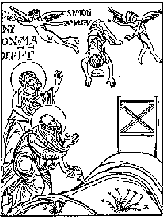




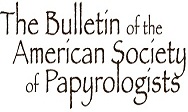
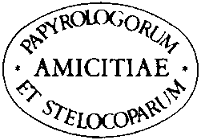
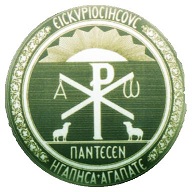





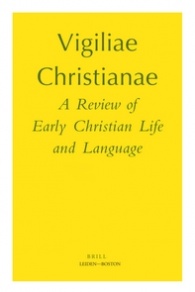






Truly a fascinating article! It gave many valuable insights into this text. Are you planning on publishing it anywhere?
It is part of my doctoral dissertation, which I will publish soon.
Remarquable, comme toujours. Le Prof. Dr Dr Peter Nagel ne peut qu’être flatté.
(Peut-être « Book of THE Bartholomew »…)
Merci, Richard, vous êtes gentil.
Maybe « In the passage under scrutiny, Jesus says “I am the King, Amen. I am the Son of the King, Amen.” » has to be understood as we see later like « The Saviour says “I am the King. I am the Son of the King,” » while his disciples echo him saying “Amen” ?
Very interesting article. I enjoy reeding it and I found it very useful.
May I just underline that the citation about the king, the son of the king from the Book of Bartholomew is actually from the Livre de la résurrection de Jésus-Christ par l’apôtre Barthélemy 12,8.
Dear Constantin,
The Book of Bartholomew is indeed also known as the Book of the Resurrection. As all the manuscripts of this work are acephalous, the title remained mysterious. However, Enzo Lucchesi has discovered recently the title page of one them, which introduces the text as a ‘book’ (tomos) of Bartholomew. Therefore, I prefer this title.
Thank you for your answer.
Could you give me more details about Enzo Lucchesi’s discovery ? (by email).
Thank you in advance!
Why « by email » ? are we so insignificant to you ?…
It was not in my intention. Sorry for this misunderstanding.